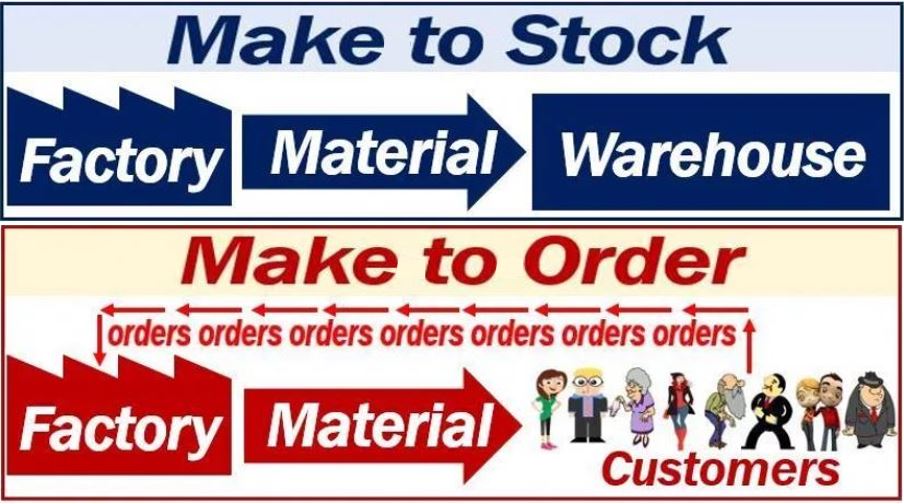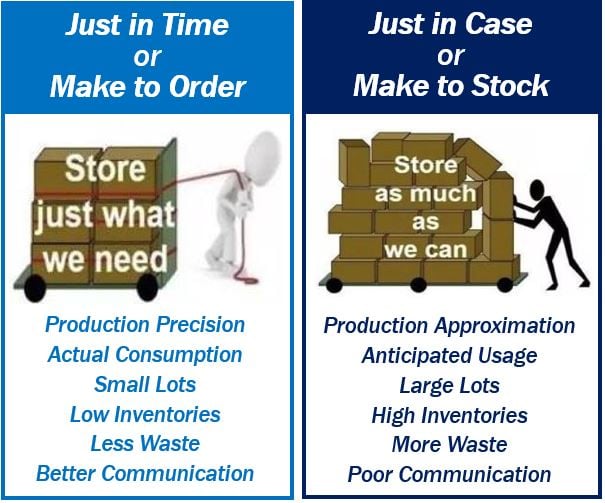What is make to stock or MTS? Definition and examples
Make to stock or MTS is a strategy some companies adopt to produce goods based on predicted demand. In other words, the company estimates how high or low demand will be at a future date and makes sure it has the necessary stocks to meet that demand. We also call this built-ahead production approach build to stock or BTS.
We usually associate BTS with the production techniques that manufacturers used during the industrial revolution. Makers would produce large quantities of goods, which they stored in warehouses, in anticipation of demand.
If the future demand estimates are accurate, make to stock can be extremely cost effective. However, there is a risk of inaccurate forecasts.
Cambridge Dictionary has the following definition of the term:
“A make-to-stock manufacturing process is one in which goods are made and stored before customer orders are received.”
We can write the term with or without hyphens, i.e., build-to-stock or build to stock, make-to-stock or make to stock. However, make sure you are consistent. Don’t switch styles within the same article.

Make to stock vs. make to order
Make to stock contrasts with make to order or MTO. MTO is a manufacturing process in which customers customize the product they want to purchase. They place the order first, with a detailed description of how they want it, and then the company manufactures it.
According to a Market Business News article about make to order:
“Make-to-Order is ideal for companies that want to focus on low volume and highly customized products. It is also ideal for businesses that sell expensive goods. If an item is expensive, it is also costly to hold in storage.”
Put simply; with a make to stock approach the manufacturer makes the product before the customer places the other. A make to order approach, on the other hand, is the other way round; the manufacturer makes the product after the customer places the order.

Make to stock is commonly considered as an appropriate approach for goods where there are few product lines and lengthy changeovers between expensive products.
According to Wikipedia:
“Some firms build all their products to order while others build them to stock. Given the widespread proliferation of products, there are a number of manufacturers taking a hybrid approach, where some items are built to stock and others are built to order.”

